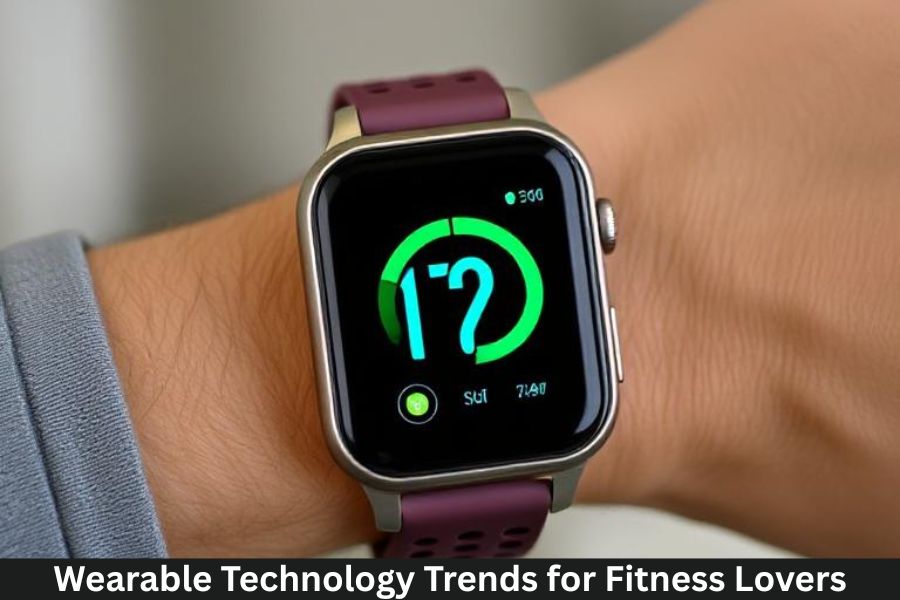Fitness and technology are becoming an inseparable duo in the modern age. From smartwatches to advanced fitness trackers, wearable technology has revolutionized how fitness enthusiasts monitor their workouts, health, and performance. As we look ahead, the evolution of wearable tech is moving faster than ever, offering new features and capabilities that were once thought to be science fiction. In this article, we will explore the emerging trends in wearable technology for fitness lovers and what the future holds for these game-changing devices.
Introduction
The rise of wearable technology has transformed the fitness industry. Devices such as smartwatches, fitness trackers, and even smart clothing are now providing users with real-time data on their health, activity levels, and overall fitness. For fitness lovers, these gadgets offer a wealth of information and insights that can help them achieve their goals, whether it’s running a marathon or simply staying in shape. But with constant innovation, the wearable tech market is always evolving, and staying on top of the latest trends is essential.
The Current State of Wearable Technology in Fitness
Before diving into future trends, it’s important to understand where wearable technology stands today. Fitness wearables have come a long way from their humble beginnings. Devices like Fitbit, Apple Watch, and Garmin now offer sophisticated tracking features such as heart rate monitoring, GPS tracking, sleep tracking, and even ECG (electrocardiogram) capabilities. These features have already made fitness tracking more accessible, convenient, and effective for users worldwide.
Key Trends in Wearable Technology for Fitness Lovers
1. Advanced Health Monitoring
Wearable technology is moving beyond just tracking steps and calories burned. Future devices are incorporating more advanced health monitoring features, such as continuous glucose monitoring, blood oxygen levels, and even real-time blood pressure tracking. These advanced sensors will allow fitness lovers to gain a deeper understanding of their body’s inner workings and optimize their workouts and recovery times accordingly.
2. Smart Clothing
While smartwatches and fitness trackers dominate the wearable tech space, smart clothing is an emerging trend that fitness enthusiasts should keep an eye on. Smart clothes, such as compression shirts and workout leggings, are equipped with sensors that track muscle activity, heart rate, and body temperature. For example, wearables like the Hexoskin smart shirt provide biometric data that can be used to analyze your performance in real-time. This is ideal for athletes and anyone looking to enhance their training routine.
3. Virtual and Augmented Reality Integration
Virtual and augmented reality (VR and AR) are set to revolutionize how we experience workouts. VR headsets are already being used in fitness applications to create immersive workout experiences, such as cycling through scenic routes or participating in virtual yoga classes. On the other hand, AR allows fitness trackers and smart glasses to display real-time data overlaid onto your field of vision, giving users a more interactive and engaging workout experience.
4. Personalized Fitness Plans Powered by AI
One of the biggest trends in wearable fitness tech is the use of Artificial Intelligence (AI) to create personalized fitness plans. Devices powered by AI can assess your fitness level, health data, and goals to generate workout plans that are tailored specifically to you. AI-powered wearables can adapt your plan in real-time based on your progress, ensuring that you’re constantly challenged and motivated. It’s like having a personal trainer right on your wrist.
5. Real-Time Feedback and Coaching
Real-time feedback is one of the most useful features of wearable fitness devices. However, as technology continues to improve, these devices are becoming more like personal coaches. Through voice or haptic feedback (vibrations), wearables can provide users with cues during their workouts, helping them correct form or adjust their pace. In the future, we can expect these devices to offer even more sophisticated coaching, helping users maximize their potential by offering feedback on everything from posture to hydration levels.
6. Sleep Tracking and Recovery Insights
Rest and recovery are crucial aspects of any fitness journey, and wearables are increasingly focusing on this. Advanced sleep tracking features that monitor sleep quality, REM cycles, and disturbances are becoming more accurate. These insights allow fitness enthusiasts to understand how their sleep patterns affect their performance. In the future, we’ll likely see wearables that offer detailed recovery data, helping users understand when their body is ready to push itself again and when it needs more rest.
7. Stress and Mental Health Monitoring
Fitness is not just about the physical body—it’s about the mind, too. Stress management and mental health awareness are becoming important features of wearable fitness tech. Wearables that track heart rate variability (HRV), breathing patterns, and even mood are gaining popularity. These devices can help users monitor their stress levels throughout the day, offering meditation or breathing exercises to help manage anxiety and improve overall well-being.
8. Longer Battery Life
One common frustration with wearable tech is the need for frequent recharging. As wearables become more advanced, manufacturers are focusing on increasing battery life. With new innovations in battery technology, we can expect wearables to last much longer, even when using advanced features such as GPS tracking or heart rate monitoring continuously. Some devices are now able to last several days on a single charge, and this trend is likely to continue.
9. Biometric Authentication
Security is a growing concern in wearable tech, especially with devices that store sensitive health data. Future wearable devices will likely include biometric authentication features like fingerprint scanning, facial recognition, or even vein authentication to ensure that only the wearer can access their personal information. This added layer of security will provide peace of mind to fitness enthusiasts concerned about data privacy.
10. Sustainable and Eco-Friendly Materials
As sustainability becomes a bigger focus across industries, wearable tech is also going green. Manufacturers are exploring sustainable materials for their devices, such as biodegradable plastics and eco-friendly fabrics for smart clothing. Expect future wearables to have a lower environmental impact, providing fitness lovers with a guilt-free way to stay fit and healthy.
The Future of Fitness: Where Are We Headed?
Wearable technology is poised to become an even more integral part of our fitness routines. As these devices evolve, we can expect to see more integration with other health-related technologies, including nutrition tracking and even genetic data. With better AI, sensors, and cloud computing, wearables could provide users with insights that were once unimaginable.
The Role of 5G in Fitness Wearables
The rollout of 5G networks will play a pivotal role in the next generation of fitness wearables. With faster data transfer speeds and low latency, 5G will allow wearables to transmit data in real-time, providing instant insights during workouts. This can significantly enhance the interactive experience of fitness apps, live workouts, and virtual training.
Conclusion
Wearable technology for fitness lovers is evolving rapidly, and the future is incredibly exciting. From advanced health monitoring and smart clothing to AI-powered coaching and stress tracking, the innovations in wearable tech promise to make fitness more personalized, accessible, and effective. As the technology continues to improve, fitness enthusiasts will have even more powerful tools at their disposal to optimize their health and performance. Embrace these trends, and get ready to take your fitness journey to new heights!



